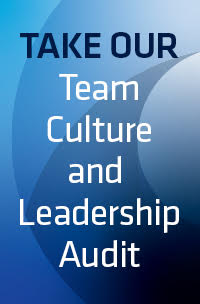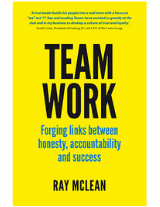Often in our line of work, when we go in to meet with CEOs, managing directors and business owners to help them improve performance, we will ask: ‘What is your pain point at the moment?’ or ‘What is currently holding you back? In many instances, leaders nominate a lack of collaboration or the often-referred-to ‘working in silos’. If so many organisations are struggling with this concept, then as leaders what are we doing to address it? Below are some steps that we can take to start tackling the challenge.
Get executive buy-in
In a Forbes article on the silo mentality, former US Navy SEAL and leadership expert Brent Glesson discusses how many executive teams look down upon various departments and complain about their ineffectiveness and inefficiency at working together. But what executive teams should be doing is taking responsibility and ownership of the problem and understanding the environment they are creating.
With a recent client of ours, we started the program with an overview of our Leading Teams High Performing Teams Model, a key component of which is having a clearly articulated common purpose. This organisation did have an articulated common purpose, but when I quizzed the first four executive managers in the room, they all gave different responses. The subtle effect of this is that they would each be going back to their individual teams, spread across the country, armed with different stories about why they do what they do.
You can see from this how easily the executive team can create differences through the wider organisation. I often challenge executive teams to consider Lencioni’s Team 1 Model, which stipulates that the executive team must see themselves as a team first and foremost and a high performing team at that. Often the executive meetings can become an update around the various departments, each going into battle for their own turf, instead of a discussion and review of how well everyone is performing as a team.
If executives cannot perform highly as a team, what hope does the rest of the organisation have?
Absolute clarity of purpose
As mentioned above, the starting point to breaking down silos in any organisation is to have absolute clarity of purpose around why we exist. Simon Sinek, a renowned author and Ted Talk presenter states that ‘people don’t buy what you do; they buy why you do it’.
It is the fundamental responsibility of the leader to ensure that each person in the organisation has a personal attachment to the common purpose and that they can see their role clearly contributing to the common purpose. One famous story that illustrates this, centres around JFK visiting NASA. According to the story JFK took a wrong turn, ended up in the janitors’ area and saw someone cleaning out their mop. He asked the person: ‘What do you do here?’ They replied: ‘I’m helping put man on the moon.’ A clear illustration of a member of the organisation having a clear alignment to the organisational purpose.
If you were to ask people in your organisation, ‘What is our common purpose?’, what responses do you think you would receive? Would they be consistent across the organisation?
Fostering trust – real trust
‘Trust is equal parts character and competence… You can look at any leadership failure, and it’s always a failure of one or the other,’ comments Stephen R. Covey in his book The Speed of Trust. At Leading Teams we often refer to the Trust Model of Competence and Character as an awareness and review tool for our teams. Questions that I think strike at the heart of trust include: ‘Is that person good for their word?’ and ‘Would they put the needs of the team ahead of their own if required?’ Trust is not an exercise, nor is it something that we can easily measure. But we know when it is there and when it is absent.
It is the vital ingredient in any high performing team, so how do we go about building it?
How to build trust – communication tools for leaders
One sure-fire way to break down silos and improve collaboration is to build relationships and improve our communication capabilities. Being present, asking the right questions and listening more are just five tips from Brent Gleeson.
If as leaders we can see relationships as an investment, then we will attribute the required time and effort to foster them. As leaders, we can perform an exercise in which we reflect on where we see the strength of our key relationships. By using this as an awareness tool we can then build strategies to improve our relationships; especially the ones that are critical for our performance. How would you rate the strength of your relationships and how would people rate you? The sooner we can enter these conversations, then the sooner we can action them in order to foster them.
Does upper management exhibit the culture you want your employees to exhibit?
When we expect members of our team to collaborate, the first thing we need to do as leaders is to find a mirror and have a good look at the behaviours and actions that we display. In John C. Maxwell’s ‘21 Irrefutable Laws of Leadership’, the number one law is the ‘law of the lid’. This law articulates that, as leaders, we set the ceiling on what is possible, and we can’t ask someone to do something that we are not prepared to do ourselves.
So, if we expect our team members to collaborate and work together, as leaders how well are we modelling those behaviours?
Adopting a methodology like agile or design thinking
Agile methodology was a technique developed originally for the highly evolving software market but has now become an important management and project approach. Reading through Jacob Aliet Ondiek’s ‘The 12 Agile Manifesto Principles Simply Explained’, there are three key principles that stand out for me around agile thinking that will assist your team with collaboration:
1. Projects are built around motivated individuals, who should be trusted
2. Excellence through reflection
3. Face-to-face conversation is the best form of communication
A key tool in breaking down silos is to engage in face-to-face conversations. Excuses around this will centre on the time, cost and energy that it takes to get people together, but this is short-term thinking. Face-to-face conversations increase engagement between individuals and departments while encouraging feedback.
Feedback then creates an environment for new ideas and thinking to help improve our performance. Feedback is central to the work we do at Leading Teams and is done purely to improve individual and team performance. We believe in the absolute value of delivering feedback in a face-to-face conversation environment, as then everyone is responsible for the ongoing development of the individual person and the team. When feedback is delivered anonymously, it allows people to hide behind what is written and not take ownership of the feedback. In this short video, Simon Fletcher from Leading Teams talks about the benefits of receiving feedback from the team.
Employee engagement and communication
Principle 2 above states Excellence through reflection. At your next team meeting, why not engage the whole team and examine whether your organisation has an issue with collaboration? These simple questions will help you facilitate the process.
1. Do we have a silo mentality in our organisation?
2. Would we describe the behaviours of our leaders as collaborative?
3. Are we clear and consistent on our organisational purpose? If we asked other members of the organisation would they give the same response as us?
4. How would we rate our relationships and levels of trust in this team and the wider organisation?
5. Do we engage in face-to-face feedback to drive our performance?
Let’s put it into practice!
It is important to keep in mind that everything I have outlined above should not only foster reflection but also drive action. So, bookmark this blog post and revisit the sections that you think you can apply in your organisation.
And if you need help or advice on how you can drive better performance in your organisation, reach out to Leading Teams and let us take you from good to great! Every organisation we work with has a wealth of untapped potential just waiting to shine. We would love to help your team become high performing.
Gavin joined Leading Teams in November 2017, coming from an international career in the sport and corporate worlds. He is a Facilitator based in Melbourne.
Learn more about Gavin.




